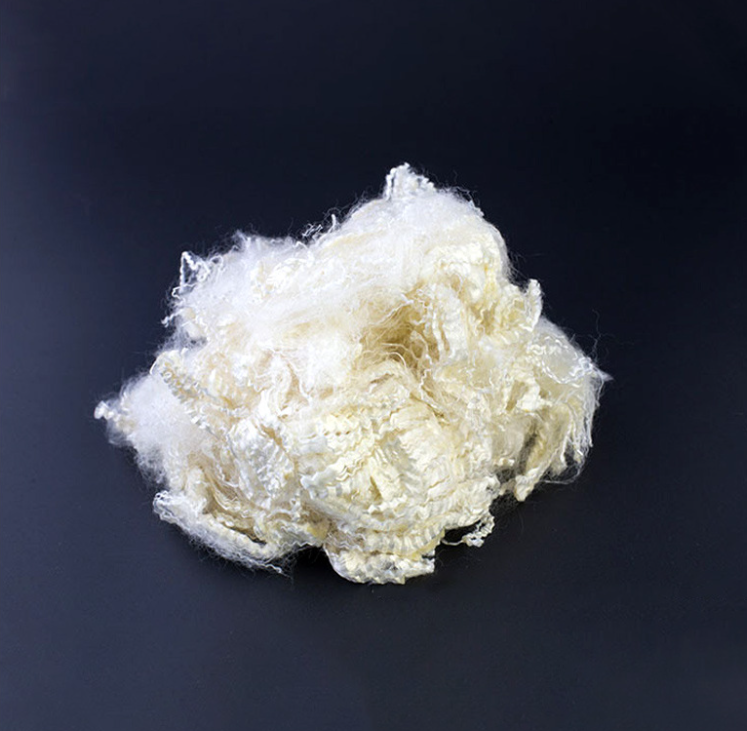Aramid 1313 crimped fiber is used in insulation materials and high-temperature filtration
Jul 09,2025

Aramid 1313 crimped fiber
Excellent thermal stability, long-term temperature resistance: can be continuously used at 220℃, maintaining stable mechanical and electrical properties.
Instantaneous high-temperature resistance: No shrinkage or melting after short exposure to 300℃; decomposition begins above 370℃, carbonization at 400℃.
Flame retardancy, Limiting Oxygen Index (LOI) >28%, self-extinguishing when exposed to fire, no molten droplets, no release of toxic gases.
In sudden high temperatures of 900–1500℃, the fiber surface rapidly carbonizes and thickens, forming an insulating barrier, providing escape protection for protective clothing.
Resistant to strong acids, strong alkalis, and organic solvent corrosion, resistant to hydrolysis and steam erosion.
Good mechanical and processing properties, high elongation at break (~45%) and flexible molecular structure, allowing it to be processed into fabrics, non-woven fabrics, or composite reinforcing materials by conventional textile machinery.
Abrasion and tear resistant. After 100 washes, the fabric's tear strength still maintains over 85% of its initial value. [The above data is from the internet and laboratories]
Applications of Aramid 1313 crimped fiber 5D
High-temperature protective equipment
The crimped structure enhances the entanglement force between fibers, improving the fabric's tear resistance and comfort.
Firefighting suits/Special training suits:
Utilizing its Limiting Oxygen Index (LOI ≥ 28%) and carbonization characteristics when exposed to fire, an insulating barrier is formed in sudden high temperatures of 900–1500℃, providing personnel with 30-120 seconds of escape time.
Industrial protective clothing:
Used in high-temperature working environments such as petroleum, power, and metallurgy industries, replacing traditional flame-retardant cotton, with superior abrasion resistance.
Arc-flash suits:
In high-voltage electrical work scenarios, the fiber rapidly carbonizes upon exposure to high temperatures from an electric arc, blocking heat transfer and reducing arc-flash injuries.
High-temperature flue gas filtration materials
Crimped fibers increase the bulkiness of filter media, improving dust holding capacity and filtration efficiency.
Industrial high-temperature filter bags:
Used for flue gas dust removal in cement plants, steel mills, and chemical plants. Can withstand long-term working temperatures of 260℃, has excellent acid and alkali resistance, and high dust removal efficiency. 5D fineness fibers can be made into denser needle-punched felts, enhancing particle capture capability.
Precious metal recovery filter cloth:
Used for filtering precious metal dust from high-temperature flue gas in smelters. Its chemical corrosion resistance prevents filter material degradation.
Lining and filling for protective products
Lining/filling for fire helmets and high-temperature resistant gloves: Provides thermal insulation and cushioning.
Flame-retardant home textiles/Public soft furnishings filling: Used for cushions and mattress fillings in places with high flame retardancy requirements (e.g., high-end hotels, theaters, vehicle seats), meeting safety requirements while ensuring comfort (thanks to the fluffy softness brought by crimp).
Insulating materials
Electrical insulation paper/felt: Used as high-temperature insulating layers and pads for motors, transformers, and electronic devices (such as mobile phone battery separators). The crimped form helps improve dielectric strength and electrical tracking resistance.
High-temperature resistant wire and cable wrapping/filling: As an insulating layer or filling layer, providing flame retardant, insulation, and heat protection.
Related Posts
Contact Us
E-mail:
gdkaidun@163.com
Phone/WeChat:
86-131-3828-6677
Address:
Room 401, Building 21, No. 1, Keqing Road, Yundonghai Street, Sanshui District, Foshan City, Guangdong Province





